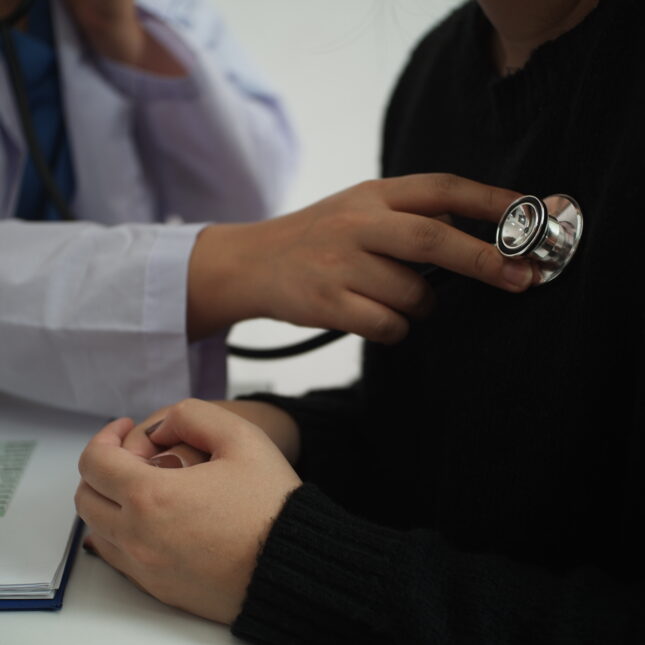
For many Americans, health care means going to a local primary care office. But the vast majority of clinical research is conducted inside the walls of large, specialized academic health centers. Millions of patients are left out of those studies, which often fail to capture the population in all its diversity.
Now, for the first time, the National Institutes of Health is investing in the creation of a national primary care research network to try to address this issue. Its $30 million pilot program, called Communities Advancing Research Equity for Health and announced on Thursday, will fund and support a small number of primary care sites as they participate in a range of clinical trials.
“This is an incredibly exciting opportunity,” said Diane Harper, a primary care physician and professor in family medicine at the University of Michigan, Ann Arbor. Instead of running individual, siloed research projects out of specialized sites, the program will allow network members to participate in several trials — choosing between 20 to 30 studies — to match their local population’s health needs.
“A person is not a disease, and most of the NIH is organized around diseases,” said Harper. “This is the first time that NIH is recognizing that people are complex, and have many factors that pertain to their health care … that cannot be teased out and separated to be studied in a single, particular line.”
The pilot is an opportunity to better understand how research can serve the needs of patients outside traditional settings, said NIH Director Monica Bertagnolli. “We know that every community is different, and we cannot just assume that a rural community in Alabama is going to be the same as a rural community in Montana or that their health issues are the same,” she said. “What we want to do is to be able to offer any community a whole bunch of different research opportunities,” learning through experience what they find most meaningful.
The research projects will go beyond drug trials to emphasize issues that are acutely experienced by communities facing health disparities, including substance use, mental health disorders, and obesity.
The timeline is tight: The NIH hopes to award funding very soon, and hold its first investigator meeting by the winter. The focus on a speedy start, said Harper, is not giving primary care sites sufficient time to apply for the funding deadline, which is set for next week. As a result, she worries the first round of research will be led by academic networks with links to primary care. “These are not primary care networks,” she said. “These are Ph.D.s with ideas about what it means to be in primary care, it’s not the people who practice.”
The accelerated timeline was put in place to support a launch by the end of fiscal year 2024, said NIH spokesperson Renate Myles, while still allowing the application period to be open for about six weeks. “We expect more opportunities in future years for potential applicants who were unable to participate this year,” she said.
This isn’t the first experiment with primary care research networks. “There’s many folks who’ve worked for a long time to help the NIH get to this point where they’re ready to take their research out of the academic medical center into rural and frontier and underserved community practices,” said Jack Westfall, a rural primary care physician and retired professor at the University of Colorado.
In the late 1990s, Westfall helped establish the High Plains Research Network, a research network of all the primary care practices in eastern, rural, and frontier Colorado towns — most with just a few thousand residents each. He’s found that community-based studies can pay dividends for researchers, too.
“The NIH research needs to move outside of the academic medical centers, out into the community, out into the primary care practices, both for finding study subjects, but also for finding research ideas,” said Westfall. “Many times there are clinical questions that come up out of the community, from the patients, from their interactions with their physicians that could generate ongoing ideas for research.”
The NIH also sees the program as an opportunity to gain trust from communities that are skeptical of the medical establishment. “We are here to understand what people need and to earn their trust by delivering for them,” said Bertagnolli. “Trust is not automatic, it has to be earned.”
To build that trust, the network will have to be careful not to treat patients and their local providers like cogs in a machine. “The risk is that this will just be extractive, not collaborative,” said Westfall. “We want to make sure that this is not just an extraction of study subjects out of primary care and NIH, but a bidirectional flow of resources, of ideas, of topics, of power.”
“Making studies available closer to where people are actually getting treated, that’s the first step,” said Andrew Trister, chief medical and scientific officer at Verily, an Alphabet company that builds tools for clinical research. But it raises a number of important questions, he said: “What’s the chain of the trust chain? Who is trusted in the community? Who could be able to help people understand more about what the clinical study is about? Why participate in research?”
Down the line, the network could help primary care sites to mobilize more effectively in case of national health emergencies. “The Covid pandemic did not use primary care at all efficiently,” said Harper. But if the pilot is successful and expands to create a nationwide network, it could eventually enable a faster, more effective public health response — and clinical trials, to boot.
To submit a correction request, please visit our Contact Us page.









